Larnaca Travel Guide
Larnaca is one of the most popular holiday spots in Cyprus, thanks to its stunning beaches and a lovely palm tree-lined promenade. As an important port of call for cruises in the East Mediterranean and the home of a busy international airport, it is the international gateway to Cyprus.
The destination was known as Kition in the days of the Old Testament and is one of the oldest continuously inhabited settlements in the world. The ruins of the ancient city can still be seen and much of its rich archaeological heritage has been preserved and is showcased in the local museums.
The lively package holiday resorts of Ayia Napa, Protaras, and Paralimni sit on a peninsula to the east of Larnaca, and are heaving with holidaymakers over the summer months. With a reputation as the party capital of Cyprus, the beach resort of Ayia Napa is popular with the young looking to make the most of their holiday in the sun.
Away from the action along the coast, the Larnaca region offers miles of unspoilt wilderness to explore. The Cape Greco peninsula is a government-protected conservation area with dramatic cliffs and abundant indigenous flora and fauna, proving popular with walkers and cyclists.
Things to do in Larnaca
There's plenty to see and do in Larnaca, with visitors able to relax in a gorgeous Mediterranean setting before exploring the impressive archaeological sites. The most famous of these are the ruins of the ancient city of Kition, and the remains of Choirokoitia, a Neolithic settlement and UNESCO World Heritage Site that dates back to around 7000 BC.
Numerous museums preserve the country's historical artefacts, while there are many sites of religious significance such as the remote yet beautiful Stavrovouni Monastery, the striking Hala Sultan Tekke and the Church of Avios Lazaros. For those more interested in sand and sea, the main town beach of Finikoudes is highly popular. Larnaca is a dream destination for divers, and it has many technical and recreational dives. One of the most worthwhile dives is the viewing of the Wreck of the Zenobia.
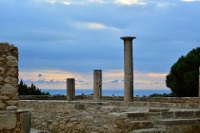
Ancient Kition
Kition was an ancient city-state on the southern coast of Cyprus in today's Larnaca. Some of the ruins can still be seen, and they feature the remains of five temples dating back to the 13th century BC. Of particular interest is the Phoenician Temple of Astarte, which was built on the ruins of an earlier Bronze Age temple. The lower part of the northern city walls are also still visible, built of huge stones resembling Mycenaean cyclops. Residents in Larnaca are still finding artefacts all over the city, and a number of building projects have been abandoned due to fresh discoveries.
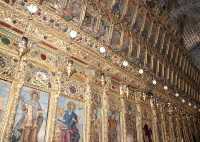
Church of Ayios Lazaros
The 9th-century Church of Saint Lazarus stands in Larnaca as an important religious institution on Cyprus. Lazarus is believed to have lived at ancient Kition for 30 years after his resurrection by Jesus Christ, and was ordained the Bishop of Kition by Saints Barnabas and Mark. The church was built by the Byzantine Emperor Leo VI above what was believed to be the empty grave of Saint Lazarus. Subsequently, there are those who believe his final resting place to be in Marseilles, France. Eight days before the annual Greek Orthodox Easter, the Baroque wood-carved icon of the saint is carried in a procession through the streets of the town.
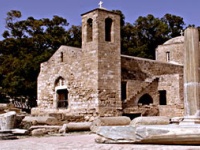
Larnaca Medieval Museum
This fascinating and well-stocked museum is housed in the upper level of the Larnaca Castle on the city's seafront. The castle itself is the main attraction, built in 1625 by the Turks to defend the city from invasion. There is still a Turkish inscription above the doorway. Later it was used as a prison during the early years of British rule. One of the most popular attractions in Larnaca, the castle also operates as the Larnaca Municipal Cultural Centre during the summer and hosts local cultural events. The museum contains displays from the early Christian, Byzantine, Lusignan, and Ottoman periods.
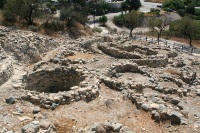
Choirokoitia
About 20 miles (32km) from Larnaca on the Lefkosia-Lemesos Road, archaeological excavations at Choirokoitia have revealed one of the oldest Neolithic sites on Cyprus, dating back to around 7000 BC. Also known as Khirokitia, it was home to primitive farmers who cultivated wheat and barley. Visitors can explore the settlement's defensive wall, circular houses, and tombs. The site was first excavated in 1934 and work continues to this day. Four of the beehive-shaped houses made of mud and stone have been reconstructed to show how these early farmers lived. Most of the finds from Choirokoitia are displayed in the Cyprus Museum in Nicosia.
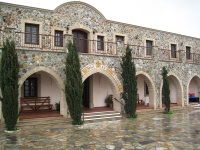
Stavrovouni Monastery
Perched atop a solitary mountain, Stavrovouni Monastery is the oldest monastery in Cyprus and was founded in the 4th century by Saint Helena. Its most treasured relic is a supposed fragment of the holy cross, which is encased in a silver cross and is not visible to the public. Another artefact left by Helena at the monastery is the Cross of the Good Thief, which includes the nail and part of the rope said to have tied Jesus to the cross. The monastery is perched upon the eponymous mountain that used to be called Olympus. Reached by a winding steep road, the monastery is considered the spiritual centre of Cyprus and now houses an order of monks.
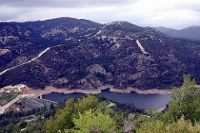
Troodos Mountains
Within the interior of Cyprus and north of Limassol, the Troodos Mountains offer beautiful scenery, ski trails, and walks for nature lovers. The Troodos Mountains are the largest mountain range in Cyprus, so it is no wonder that they are also a popular winter destination. They are one of only a handful of places in the world where visitors can ski in the morning, and swim and sun tan in the afternoon. The main ski slopes are on the 6,401 foot (1,951m) Mount Olympus, roughly an hour's drive from Nicosia or Limassol, and the ski season extends from the beginning of January to the end of March.
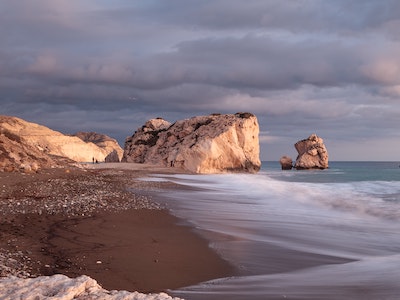
Rock of Aphrodite
Perhaps one of the most famous attractions on the island of Cyprus, the Rock of Aphrodite is an ocean outcrop surrounded by myth and legend. Said to be the birthplace of the Greek goddess of love, it was also supposedly put there by the Byzantine hero Basil to keep out invading Saracens. Seeming to bubble with divine energy, the waves are quite forceful, so tourists are encouraged to neither swim nor climb the rock formations. The area is also known as Petra tou Romiou, meaning 'Rock of the Roman'.
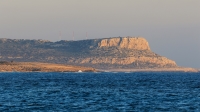
Cape Greco
The natural beauty of Cape Greco makes it one of the first locations in tourists' itineraries. The unique headland stretches out into the gorgeous blue ocean, with fascinating shapes peeling off from the cliffs into the shore waters. There are also trails which will appeal to hikers, exploring the surrounding national park filled with a wide variety of flora and fauna. For those more inclined to adventure, there are also opportunities for cliff jumping, diving, and swimming in sea caves.
Getting Around
The most popular way to get around in Larnaca is by bus. The local public bus service is run by Zinonas Larnaca Buses, which has routes that run throughout the city and surrounding areas. Buses are blue in colour and usually have their destination displayed on the front window. Roadside bus stations generally don't display departure information, although buses should arrive approximately every 30 minutes. The city's largest bus terminal is the Dimitras Bus Station to the east of the city, which can provide travellers with route information. Buses are also a popular option for intercity travel and are run by a variety of private operators, with some extending routes to resorts such as Ayia Napa and Protaras. Taxis are another option for getting around Larnaca as well as for intercity travel but they are more expensive than buses. For longer distances, shared taxis are a popular, more cost-effective option than taking a regular taxi cab.
Larnaca Climate and Weather
The Mediterranean climate in Larnaca is characterised by hot, relatively dry summers and winters with moderate rainfall and thunderstorms. The hottest part of the year lasts from the middle of June until the beginning of October, with average high temperatures between 84F (29C) and 91F (33C). Minimum temperatures rarely fall below 66F (19C), while humidity levels during this period can be as high as 90 percent. The summer heat is, however, offset by fresh sea breezes. The coolest part of the year starts in the beginning of December and lasts until the end of March, with temperatures that generally range between 44F (7C) and 66F (19C). Light to moderate rains and thunderstorms can occur throughout most of the year; rain is most common from December to March and least likely between the middle of July and the end of August.
Cyprus travel info
Electricity
Electrical current is 240 volts, 50Hz. UK-style three square-pin plugs are used.
Language
The majority of Cypriots speak Greek, and a small percentage speaks Turkish. The Greek Cypriot dialect differs from mainland Greece. English, German and French are spoken in tourist areas.
Money
The official currency is the euro (EUR). Money can be exchanged at banks, which are open from Monday to Friday. ATMs that operate 24 hours a day are spread throughout the island; major credit cards are accepted in most establishments.
Tipping
A 10 percent service charge is levied in hotels and restaurants so a tip is not obligatory, but small change is always welcome. Taxi drivers and porters appreciate a small tip.
Health
All eligible travellers should be up to date with their COVID-19 vaccines, and hepatitis A and B vaccinations are always recommended for travellers by health authorities. After Brexit, the Global Health Insurance Card (GHIC) replaced the European Health Insurance Card (EHIC) for UK citizens. The GHIC allows UK citizens access to state healthcare during visits to the EU. The GHIC is not valid in Norway, Iceland, Liechtenstein or Switzerland, nor is it an alternative to travel insurance. Medical fees are reasonable in Cyprus, but supplies are expensive and it is probably a good idea for visitors to bring any important prescription medications they may require (with the appropriate notes from their doctor to get them through customs).
Safety
Crime against tourists is rare and the area is generally safe.
Local customs
Visitors should avoid taking photographs near military establishments. Religious customs such as Ramadan should be respected, particularly in the north where most of the Turkish Cypriots are Muslim; travellers should avoid eating, drinking, smoking and chewing gum in public during the holy month. Women should dress modestly.
Doing business
Business in Cyprus is best conducted face-to-face, as developing a working relationship based on trust is important. Business is conducted formally, and dress should be smart and conservative (a suit and tie are the norm). Greetings are usually made with a handshake, and business cards are exchanged. It is common for women to hold high positions and they are generally well respected in the business world. Punctuality is important, but meetings may not begin on time. Business hours can vary according to the season, but are usually 8am to 1pm and 4pm to 7pm Monday to Friday in summer, closing at 5pm in winter.
Duty free
Travellers to Cyprus over 17 years arriving from non-EU countries do not have to pay duty on 200 cigarettes or 100 cigarillos or 50 cigars or 250g smoking tobacco; 1 litre spirits with higher than 22 percent alcohol volume or 2 litres spirits or aperitifs with less than 22 percent alcohol volume, or 2 litres of fortified or sparkling wine, 4 litres of still wine, or 16 litres of beer.
Communications
The international access code for Cyprus is +357. The outgoing code is 00 followed by the relevant country code (e.g. 0044 for the United Kingdom). Visitors can purchase local SIM cards for their phones and WiFi is increasingly available in many cafes, restaurants and airports, and at most hotels, especially in the south (the Republic).
Passport & Visa
Travellers, except EEA nationals, should hold an onward or return ticket and documentation necessary for that journey, as well as sufficient funds for the period of intended stay in Cyprus. It is also advisable to have a hotel reservation. Extensions are available to visa-exempt nationals. Travellers should note that foreigners entering Cyprus north of the UN-patrolled 'green line' are deemed by the Government of the Republic of Cyprus to have entered illegally, and can be fined when crossing to the south (EU). Policies and procedures are subject to sudden changes, and visitors should check on the current situation before departing for Cyprus. It is highly recommended that visitors' passports have at least six months' validity remaining after the intended date of departure from their travel destination. Immigration officials often apply different rules to those stated by travel agents and official sources.
Entry requirements
US nationals must have a passport valid for six months beyond the period of intended stay in Cyprus. A visa is not required for a stay of up to 90 days.
British passports must be valid three months beyond period of intended stay. No visa is required for a touristic stay of up to 90 days.
Canadian nationals must have a passport valid for six months beyond the period of intended stay. No visa is required for stays of up to 90 days.
Australian nationals must have a passport valid for six months beyond the period of intended stay. No visa is required for stays of up to 90 days.
South African nationals must have a passport valid for at least three months beyond the period of intended stay. A visa is required, except for those carrying multiple-entry Schengen C visas that have already entered the Schengen area or been issued by Bulgaria, Croatia, Romania or a Schengen Member State. This exemption lasts for 90 days.
Irish nationals must hold a passport valid upon arrival. No visa is required.
New Zealand nationals must have a passport valid for three months beyond the period of intended stay. No visa is required for stays of up to 90 days.
Useful contacts
Cyprus Tourist Organisation, Nicosia: +357 22691100 or www.visitcyprus.org.cy
112 (General Emergency Helpline)


